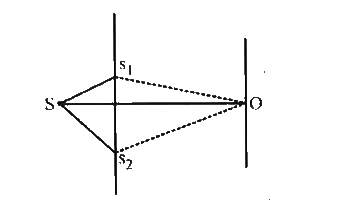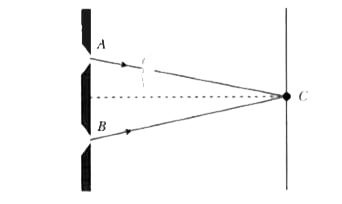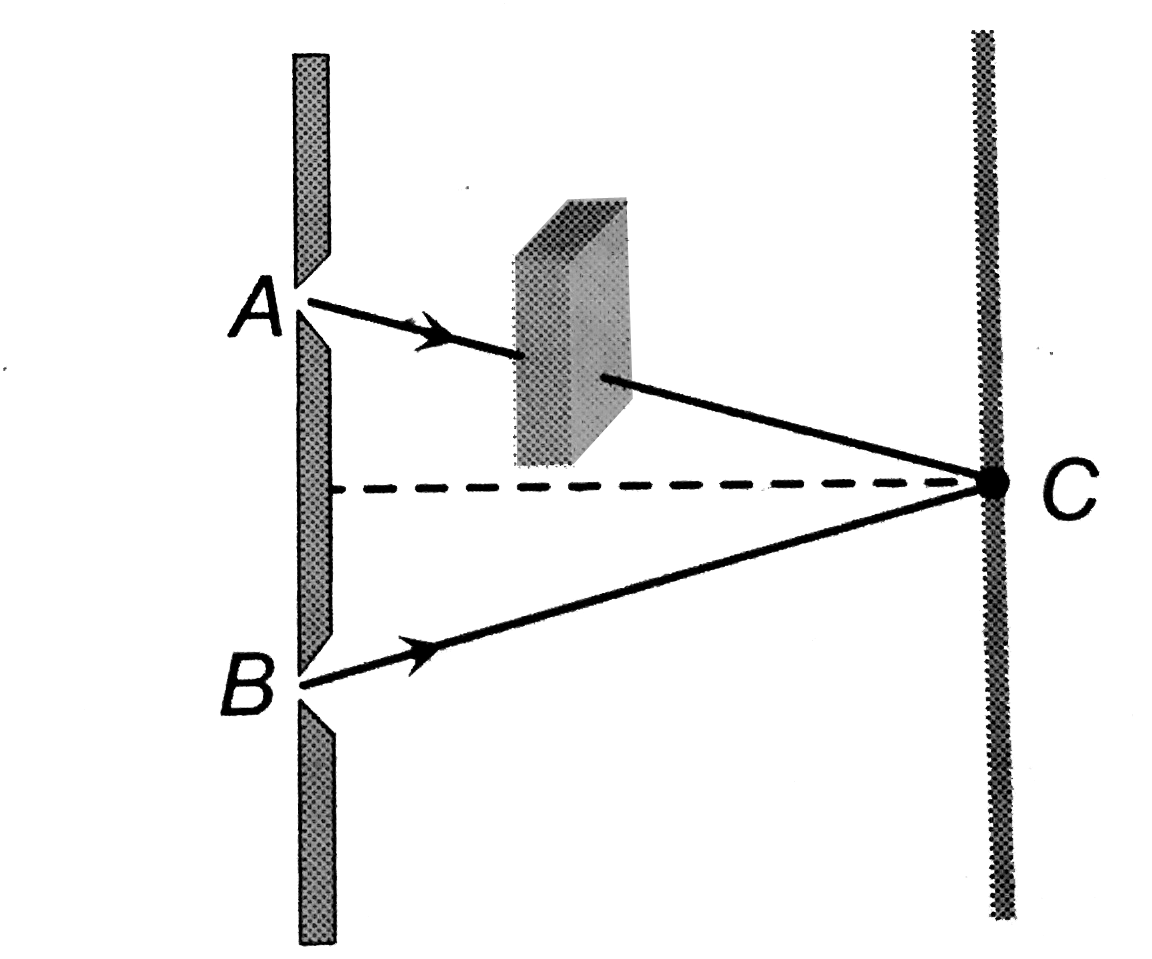In an interference experiment , two parallel verticals slits S1 and S2 are used. A thin glass plate is introduced in the path of light from S1. Then
fringe pattern remains unaltered
fringe pattern as a whole is laterally shifted towards S1
fringe pattern as a whole is laterally shifted towards S2
fringe width decrease.
The correct Answer is:B
As the thin glass plate is introduced in the path of light from S1, therefore, fringe pattern is shifted laterally towards S1.
Topper's Solved these Questions
- OPTICSBOOK - MTG GUIDECHAPTER - OPTICSEXERCISE - Check your NEET vitals
25 Videos
- OPTICSBOOK - MTG GUIDECHAPTER - OPTICSEXERCISE - AIPMT/NEET
55 Videos
- OPTICSBOOK - MTG GUIDECHAPTER - OPTICSEXERCISE - AIPMT/NEET
55 Videos
- MAGNETIC EFFECTS OF CURRENT AND MAGNETISMBOOK - MTG GUIDECHAPTER - MAGNETIC EFFECTS OF CURRENT AND MAGNETISMEXERCISE - AIPMT/NEET (MCQs)
48 Videos
Similar Questions
Two coherent sources S1 and S2 produce interference fringes. If a thin mica plate is introduced in the path of light from S1 then the central maximum
View SolutionIn an interference experiment, the two slits S1andS2 are not equidistant from the source S. then the central fringe at 0 will be

View Solution
Knowledge Check
A coherent light is incident on two paralle slits S1andS2. At a point P1 the frings will be dark if the phase difference between the rays coming from S1andS2 is
Anπ radiansB(n+0.5)π radiansC(2n+0.5)π radiansD(2n+1)π radiansIn Young's experiment, monochromatic light is used to illuminate the two slits A and B. Interference fringes are observed on a screen placed in front of the slits. Now, if a thin glass plate is placed normally in the path of the beam coming from the slit, then
 AThe fringes will disappearBThe fringe width will increaseCThe fringe width will decreaseDThere will be no change in the fringe width, but the pattern shifts
AThe fringes will disappearBThe fringe width will increaseCThe fringe width will decreaseDThere will be no change in the fringe width, but the pattern shiftsIn Young's experiment, monochromatic light is used to illuminate the two slits A and B. Interference fringes are observed on a screen placed in front of the slits. Now if a thin glass plate is placed normally in the path of the beam coming from the slit
 A(a) The fringes will disappearB(b) The fringe width will increaseC(c) The fringe width will increaseD(d) There will be no change in the fringe width but the pattern shifts
A(a) The fringes will disappearB(b) The fringe width will increaseC(c) The fringe width will increaseD(d) There will be no change in the fringe width but the pattern shifts
In a Young.s double slit experiment, the fringes are displaced by a distance x when a glass plate of refractive index 1.5 is introduced in the path of one of the beams. When this plate is replaced by another plate of same thickness, the shift of fringes is (3/2)x. The refractive index of second plate is
View SolutionIn Young's experiment, monochromatic light is used to illuminate the two slits A and B. Interference fringes are observed on a screen placed in front of the slits. Now if a thin glass plate is placed normally in the path of the beam coming from the slit

View SolutionIn Young's experiment, monochromatic light is used to illuminate the two slits A and B. Interference fringes are observed on a screen placed in front of the slits. Now if a thin glass plate is placed normally in the path of the beam coming from the slit

View SolutionLight of wavelength 500nm is used to form interference pattern in Young's double slit experiment. A uniform glass plate of refractive index 1.5 and thickness 0.1mm is introduced in the path of one of the interfering beams. The number of fringes which will shift the cross wire due to this is
View SolutionLight of wavelength 500nm is used to form interference pattern in Young's double slit experiment. A uniform glass plate of refractive index 1.5 and thickness 0.1mm is introduced in the path of one of the interfering beams. The number of fringes which will shift the cross wire due to this is
View Solution
